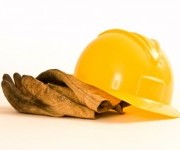Building a new foundation requires a lot of heavy machinery. Bulldozers to clear the land, extractors to dig the foundation, concrete-mixers to pour the cement, and trucks to haul the raw materials. So perhaps it’s appropriate that Jim Owens, the CEO of Caterpillar will be at the White House tomorrow for the first meeting of the President’s Economic Recovery Advisory Board (PERAB). The group includes some of America’s leading thinkers, business executives, and academics, including the CEOs of GE, UBS, and Google. (full list here)
The Board was created by President Obama in February to provide an outside-the-Beltway perspective on how we can recover from the financial crisis and build a new foundation for the American economy. “New Foundation” is emerging as the catch-all phrase to describe Obama’s domestic policy agenda, similar to FDR’s “New Deal” or Johnson’s “Great Society” as a recent New York Times article points out. It’s a good term, capturing both the shaky and unsustainable foundation of our past economic growth and framing out the kind of economy we need to build for the long-term. We are well past the time for patchwork solutions. We must rebuild and we must rebuild the right way.
Obama said as much in his “New Foundation Speech” at Georgetown University on April 14th, when he named renewable energy the third of five pillars necessary to rebuild the American economy. A clean energy economy “can create millions of new jobs and new industries. We all know that the country that harnesses this energy will lead the 21st century.” However, as the President acknowledged, “we have allowed other countries to outpace us on this race to the future.”
It is no secret that the United States has fallen behind in the most importation economic competition of the 21st century. A lack of national standards, an absence of strong climate and energy policy, and never-ending subsidies to the fossil fuel industry, have hindered America’s ability to compete with other countries for top talent and investment capital. It’s gotten to the point, that “if you list today’s top 30 companies in solar, wind and advanced batteries, American companies hold only 6 spots.” As John Doerr, a venture capitalist at Kleiner Perkins Caufield & Byers and member of PERAB, testified before Congress earlier this year, “That fact should worry us all.”
We face serious competition from a number of nations, including Spain, Israel, Germany, and Japan, but China is and will be our primary competitor for clean tech supremacy. China is already the leading alternative energy producer in the world, investing $12.6 million every day in alternative energy. According to a recent report by The Center for American Progress, the US plans to invest half as much stimulus money as China in “renewable energy, low-carbon vehicles, high-speed rail, an advanced electric grid, efficiency improvements, and other water-treatment and pollution controls.” We are far behind and only falling further. While China’s government and businesses are seizing a historic economic opportunity to expand their market share and move into high value businesses, we are fighting amongst ourselves in Congress and worrying about how to keep the fossil fuel industry happy.
The Waxman-Markey Act recently introduced in the House could be the right start, but it currently falls far short of what we need. An analysis by the Breakthrough Institute found that of the $1 trillion in cap and trade revenue between 2012-2025, only $9 billion a year will be invested in clean technology. “This $9 billion is far less than what Obama promised ($15 billion) and far less than the $30 billion that three dozen energy scientists and experts, including several Nobel laureates, called for in a sign-on letter during the fall of 2007.” In addition, 57.3% of allowances would be freely distributed to polluting industries, which “stands in contrast to Obama’s previous calls for a 100% auction, which was included in his final budget proposal.” So while the fossil fuel industry is doing everything it can to water down legislation, what it is really doing is weakening our economic future.
The good news is that many in the business community, including some high profile members of PERAB, realize this and are fighting to build a new foundation with clean energy. The CEOs of large corporations are speaking out in favor of climate and energy legislation (Check out the 9 principles of BICEP: Business for Innovative Climate and Energy Policy). Smart business leaders like Google CEO Eric Schmidt know that “if you invest in the right way you can make money by doing this.” They know that it is in America’s best interest to pass strong climate and energy legislation. As Jeff Immelt, the CEO of GE says, “businesses expect a price on carbon, and investors want clarity and certainty.” Let’s be happy that both Schmidt and Immelt are on Obama’s Recovery Board.
But perhaps more importantly, small businesses across the country are already hard at work building the the new economy. And they’re not sitting by quietly as the US Chamber of Commerce undermines America’s long-term competitiveness. Just last week, 10,000 small-business leaders petitioned the Chamber of Commerce to “stop lobbying against the clean energy jobs bill.”
All of this is important, but nothing will help more than presidential leadership. We are blessed with the greatest communicator in the White House since at least Ronald Reagan. A man who understands and values science. When it comes to energy and climate change, we need a President who will lead the movement and not just wait for the movement to come to him.
A clean energy economy can be more than a pillar to our economic recovery. It can be the cornerstone of our New Foundation.


